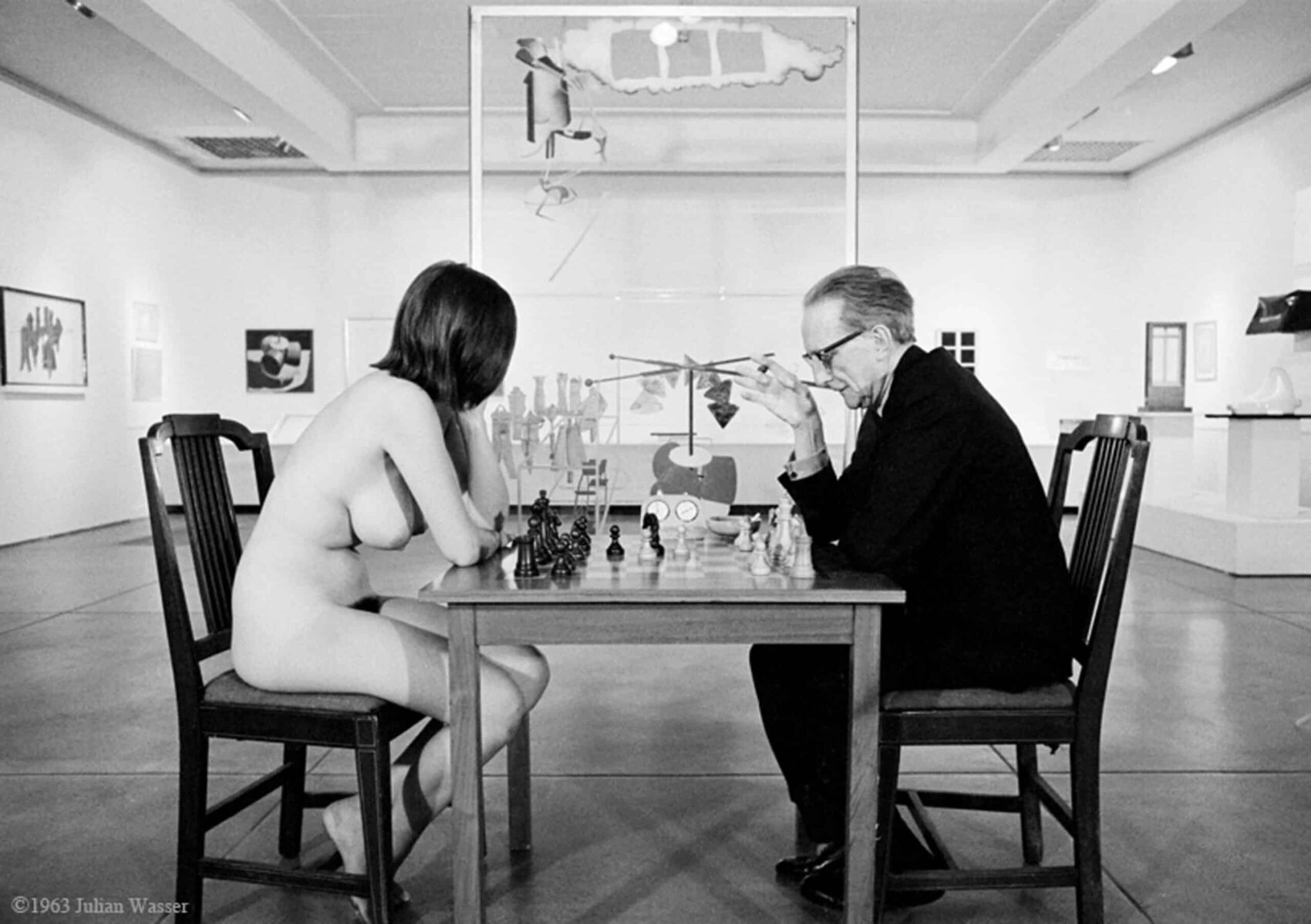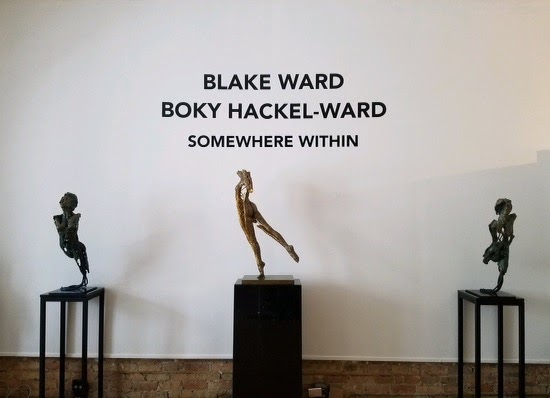Artists
David Gamble: Andy Warhol's House
Artists
OCTOBER 14, 2019 | DAVID GAMBLE
In 1988 Sotheby’s New York hosted one of the most talked-about auctions of the decade, the sale of the Estate of Andy Warhol. In addition to paintings and sculpture, some of the most hotly sought-after items were Warhol’s personal effects. The goal of the sale was to raise funds for the then fledgling Andy Warhol Foundation for the Visual Arts.
Soon after Warhol’s death in 1987, photographer David Gamble was given exclusive access to Warhol’s East 66th street House, Factory and Warehouse. There, he captured the placement of Warhol’s belongings as the artist had lived with them over the years. Rather than simply documenting the space, and Warhol’s objects. Gamble’s images sought to capture the humanity and fierce individuality of the artist.
Please join us for an intimate look into the life of this beloved Pop icon as the Art Institute of Chicago launches its major retrospective ANDY WARHOL — FROM A TO B AND BACK AGAIN that “illuminates the breadth, depth and interconnectedness of Warhol’s production across the entirety of his career but also ways he anticipated the issues, effects, and pace of our current digital age.”
Legendary photojournalist Julian Wasser reflects on career, discusses Chicago exhibit
Artists
CHICAGO (WLS) — Julian Wasser has witnessed Hollywood through a camera lens for well over half a century, capturing images of stars from Jack Nicholson to The Beatles, and he even got one of the very last pictures of Robert Kennedy before his assassination.
The view can be seen in a special exhibit, “Julian Wasser: The Way We Were,” a photographic time capsule of the 1960’s and 1970’s.
ABC7 Chicago’s Janet Davies talked to him about his new exhibit that opened Friday in River North.
Wasser began shooting spot news in the nation’s capital at a tender age.
Julian Wasser: “Every night I would climb out my bedroom window and steal my father’s car when I was 12 and take pictures, and they’d be on the front page of the Washington Post. My father would say ‘look, there’s another Julian Wasser in Washington.’ I said ‘yeah dad.'”
Later Wasser’s camera took him to New York then Los Angeles, shooting stars for publications like Time Magazine, Vanity Fair and Life Magazine.
Wasser: “Most photographers would get a star, line them up against a wall and stand there and don’t say anything. They would wait for the star to do something, I can’t stand that. They want direction. I gave lots of directions. They liked that and worked well with that. That’s why pictures look the way they do.”
Wasser’s career has spanned over six decades, and each of his iconic photographs has a story.
Wasser: “The Beatles, which was taken in London in Soho. Jayne Mansfield was at the Whiskey, I was shooting for Life Magazine. David Bowie, I was working for him, shooting at the Hollywood Bowl at one of his concerts.”
Janet Davies: “How about that Hugh Hefner photo on roller skates?”
Wasser: “He had incredible luck with women, didn’t he? He was actually a very, very nice guy, very sweet guy, he treated those girls like queens.
Davies: “What about the Marilyn one?”
Wasser: “I wanted to look at her, so I sat at her feet like a lap dog and took the pictures; she didn’t even know I was there, she’s a star!”
Wasser’s iconic photos are on display at the Hilton-Asmus Contemporary Gallery through September 30th.
“Julian Wasser: The Way We Were” runs through September 30th at the Hilton-Asmus Contemporary Gallery.
Wasser will be at the exhibit Friday from 6:45 p.m.- 9 p.m.
Hilton-Asmus Contemporary
716 N. Wells St., #3739, Chicago, IL 60654
www.hiltoncontemporary.com
For Years, This Couple Has Been Quietly Collaborating on Sculptures. Now, They Are Finally Showing Together
The true extent of the collaboration between Boky Hackel-Ward and Blake Ward was a secret for years.
The story of husband-and-wife artists Blake Ward and Boky Hackel-Ward is a romance, certainly, but one complicated by the tribulations of the art market, among other obstacles.
They were born on different sides of the world: Ward in the depths of the Northwest Territories in Canada into a family that made its name running an airline and Hackel in Germany, who then was raised between Switzerland, Costa Rica, and Venezuela.
In a cinematic turn, the pair met at a wedding where he was the best man and she the maid of honor. There was a spark—but Hackel was married at the time and both were busy pursuing individual artistic careers.
Ward had studied figurative sculpture in Paris with the sculptor Cyril Heck and gone on to teach sculpture at the University of Hanoi, as one of the first Western educators in Vietnam since 1945. She was a Conceptual artist and polyglot who played in an orchestra and restored artworks for a living.

Three years later, the two would meet again, and, with Hackel newly single, they soon became a couple. But their union was more than romantic.
An artistic collaboration soon grew between them as Hackel slowly informed the development of Ward’s sculptures. Mutually thrilled by this development, the pair was unaware that their collaboration would actually cause a flurry of distress as Ward’s publicist at the time quickly tried to subdue news of Hackel’s involvement, believing it would damage his client’s career. For years, as later gallerists would continue to subtly dismiss her influence, Hackel continued to work quietly behind-the-scenes.
Now, for the first time, the couple will present both their own works and their collaborative efforts together in “Somewhere Within” at Chicago’s Hilton Asmus Contemporary. Recently, we caught up with the pair to learn more about their story and this collaborative debut.
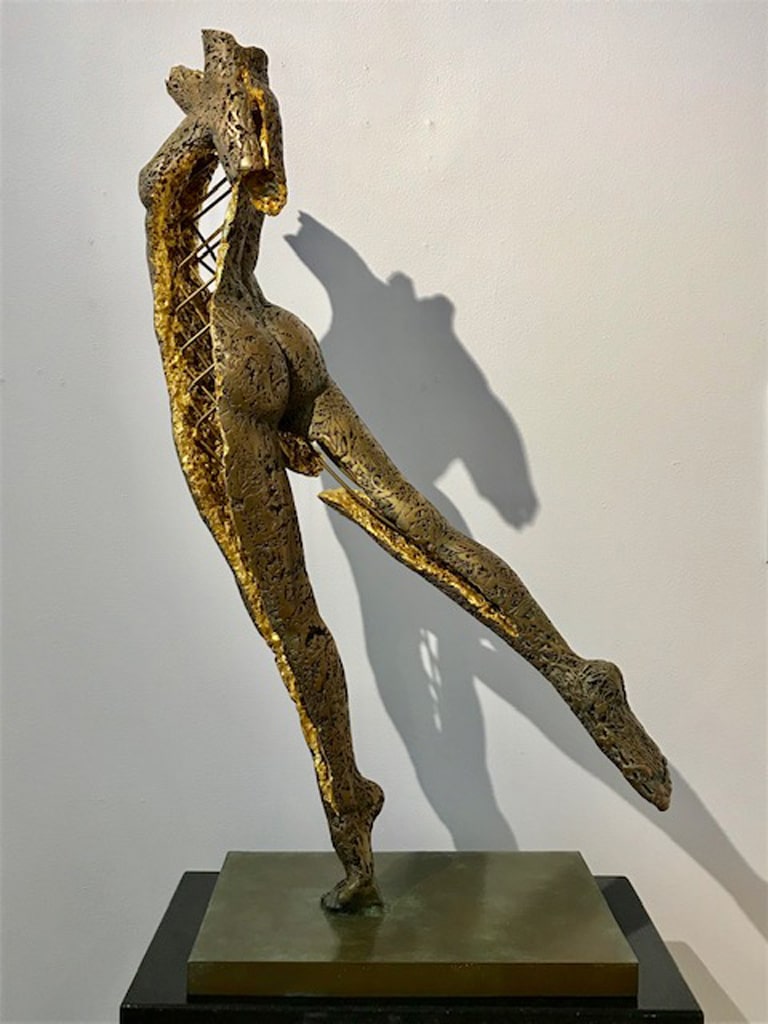
How did you two begin to collaborate? Was it something you discussed or did it just happen?
Boky Hackel-Ward: Our collaboration happened quite naturally. I had been working in art restoration and at one point Blake asked me to help with some gold leafing on one of his sculptures. Before we knew it, I was learning about his process and helping him with wax casting, which can be rather temperamental with regards to temperature. We would enter this state of flow, where the world of the studio became the only world.
We went on foundry visits together, too. The first time I went, I just watched, but with my career history, working the bronze came quite naturally to me. Power tools and files didn’t intimidate me. Blake asked me for help, so I put some gloves on and the rest is history.
What was your work like before you started collaborating with Blake?
Boky: I composed music and wrote poetry and whenever possible did performance art pieces, such as conducting the university orchestra, complete with vocal cadenzas. I was strongly influenced by artists such as Laurie Anderson, John Cage, David Tudor, Merce Cunningham, and Robert Wilson.
One of my early sculpture pieces is Requiem for my Father, which is made of crushed wire and computer memory boards. I built things but it was a bit like swimming in the dark. I never really found the right medium until Blake walked into my life.
Blake, what qualities did you feel Boky contributed to your work?
Blake: When we were working in the foundry, she wasn’t concerned with the technical principles of the pour; she was fearless. I liked that energy. I watched her pour and copied her abandonment and found myself using the technique or, shall we say, the freedom with which she poured the wax.
She introduced the idea of deconstruction or, what we now call, the reverse engineering of our sculptures. She’s very good at editing the wax sculptures. I realized that these pieces were no longer just mine, they had changed and I wanted to include her in that.

When did you decide to start signing works together, to define yourselves as equal partners?
Blake: Boky made a sculpture called Hathor while I was away on a trip. When I saw it I recognized its significance: it’s a beautiful work that I couldn’t improve upon. Then, right away, I insisted she sign it. In my opinion, with that work, Boky had expanded upon the rules of classical sculpture and she had helped me to break some of those rules as well.
So her name is written on it in bronze. I thought that everyone would recognize and accept that she was a co-creator, but people didn’t. It seemed that everyone preferred to ignore the fact. I pushed back, since truly these people, particularly one marketing consultant, had no idea what she had contributed and were wrongly worried about my career.
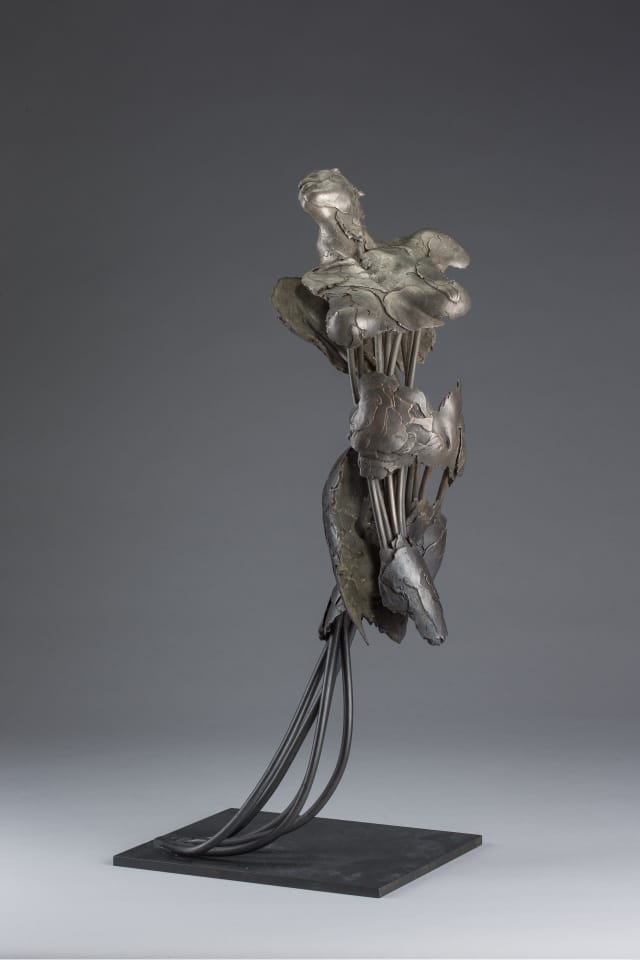
That must have been difficult for your relationship both as a couple and as collaborating artists.
Blake: These people missed the point completely. One of the things we try to do with this body of work is tell the truth; the truth in materials, the truth about the work, about how the work is made. This was another part of telling the truth. I was embarrassed by the way Boky was treated.
Boky: People insisted I’d ruin your career and I didn’t want to cause trouble for you. In this era, I suppose I expected some visibility as an individual artist. If nothing more, some credit for my work, for my ideas, and for my writing.
What changed?
Blake: We stepped back and removed these people from our lives. First I was shocked, then I was mad and then we became resilient. We retreated and let everybody’s contracts expire. It was a new chapter in both our careers.
Boky: Another very important element has been having a gallerist such as Arica Hilton who recognized us as a creative entity and wanted to show that to the world. She is an artist herself and an ardent defender of women.

How does it feel to be exhibiting together as an artistic entity for the first time?
Boky: The idea of being able to share our love story and our sculpture with others, and to do so openly, means everything to me. It means I’m not invisible. We all have our own stories and we all have the possibility of healing. For me this exhibition is about letting the light shine and telling the truth.
Blake: It is also about celebrating the overlooked accomplishments of Boky and all women, as well as recognizing realities facing our society today. Women still have to fight so hard for every little thing.
Written By | Artnet
SOMEWHERE WITHIN: Open Your Eyes to Your Eyes
Mikhail Larionov’s words to Natalia Goncharova in 1900: “Open your eyes to your eyes” is a sentiment that mirrors the beginning of an artistic collaboration and exquisite love story between what would one day become a husband and wife creative entity. Each with their own road to follow yet passing through all the stages of love that culminate in the lyrical. This is the story of Blake Ward and Boky Hackel-Ward.
Three years ago my gallery had a wonderful exhibition of sculptures by internationally recognized artist, Blake Ward. During that time, I met his partner in life, German-born Boky Hackel. She was not only stunningly beautiful, but a brilliant poet, writer, artist and all around gorgeous soul. After the opening, Blake and Boky told me the story of how they began working together and how Blake’s publicist at the time was opposed to Blake giving Boky any credit for the work she had done on the creation of his sculptures. It was too late to change the direction of our exhibition as we had already sent out press releases and BMO Harris was the sponsor of the exhibition along with the Canadian Consulate. In the end, the exhibition was a resounding success.
Now, three years later, we have invited Blake to return for a second exhibition in our gallery. But this time he comes with his partner, co-creator and new wife, Boky Hackel Ward. We are thrilled to feature Boky as Blake’s collaborator and artistic partner of this beautiful collection of inspiring angels, phantoms, ushabtis and modern sculptures. Below is some history on how Blake and Boky came to be.

German-born Boky Hackel began life as a conceptual artist, restorer of Old Master paintings, photographer, musician, writer and poet. As a conceptualist and a polyglot, language had always been extremely important in her work. Although Blake Ward’s name is well known in the art world, it was not known that Boky Hackel-Ward was in the shadows as Blake’s artistic partner. In 2015, when Blake made an announcement that he and Boky were co-creators, his publicist relentlessly convinced him that Boky’s name be kept out of the press and public because “it would hurt Blake’s career.”
In 2015 Blake and Boky exhibited in Monaco at the Grimaldi Forum when the Monaco Matin ran a story featuring their love story and their work. It was an artistic collaboration made in heaven, they wrote. On Valentine’s Day 2015, at the vernissage of Blake’s exhibition at the Canadian Sculpture Society, Blake publicly announced that the new work presented was not his alone but a result of his collaboration with Boky.

Immediately, the publicist called an urgent meeting where he strongly discouraged Blake from telling anyone about the collaboration. There were many arguments while their representative in Canada backed the publicist 100%. They relentlessly tried to dissuade Blake from following his instinct and ethics. Boky’s contribution they said should be to continue ghost writing his blogs every three days, but no mention or credit should be given to her artistic collaboration with Blake.
In short time, Blake fired the publicist. He gave Boky credit not only for her writing but also for her creative contributions. Although the damage to their artistic synergy was serious, their love, respect and devotion to one another ran deeper.
Canadian-born Blake Ward was born in Yellowknife in the North West Territories in Canada, In 1985 Blake moved to Paris to study under Cyril Heck with whom he learned traditional techniques of modeling figurative sculpture. When the opportunity arose for Blake to move closer to both his foundry and marble quarry in France and Italy, he opened his current studio in Monte Carlo in 1990.
It was Blake who introduced Boky to sculpture. He asked her to do some gold leafing on some bronze pieces because of her mastery in restoring old master paintings in Italy. This assignment became the catalyst to her development as a sculptor.
“I suppose our collaboration is a result of the love that we have for one another. From the very beginning we have always tried to teach one another and share our knowledge. We each bring different things to the table; the sculpture techniques, the conceptual, the wax and the clay, we share this beautiful life together. Without the art we would be lost!” states Boky.

In March 2013, Blake & Boky began offically working together. Blake taught Boky the techniques he used in building his sculpture and Boky shared with Blake her knowledge and experience as a conceptual artist. The synergy was evident as they began to create together. It quickly turned into an incredible love story.
One day, as Boky returned to the studio after an orchestra rehearsal, she found Blake holding up a sculpture that the she had built in the style of his work. He looked at her and said, “Sign it….there is nothing I can do to make it better.” The sculpture was an Ushabti (a funerary figurine used in ancient Egypt) Boky had named “Hathor – Goddess of Love.” In ancient Egyptian mythology, Hathor is also the goddess of beauty, music, dance, joy, motherhood but best known as the goddess of love. She was also considered the protective goddess of women. Perhaps Boky created Hathor as a way of protecting herself after she was negated so strongly by the “good ole boy” publicist.
Blake created an inner structure for it, built a dream catcher and ultimately, they both signed the piece. From that point on, they worked incessantly, creating well over 20 sculptures per year. “Hathor” along with her sister sculpture “Hetheru” will be on display.
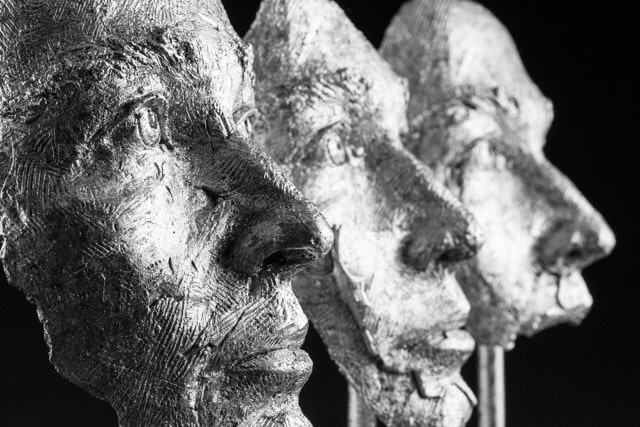
After much soul searching, today Blake and Boky are married and working together in perfect synergy. They work in harmony in the studio and in their foundries in Italy, France and Canada. His work, her work, and their work… They are two separate artists but sometimes one plus one makes for an even stronger one.
Blake has thrown himself into the digital world of Z-brush and 3D printing, mixing the digital with the analogue, the state of the art with the ancient lost wax techniques. Boky’s collection of Figurative Poetry is about making the hurt subside. It is what Blake calls Intentional Art, art with a purpose; it is about healing.
While building on the techniques of figurative sculpture lost in antiquity, Blake remains true to their representational qualities, yet his sculptures are a transgression of the rules, crossing over into the abstract and ethereal realms of our inner worlds. His 1/4 life-size, partial figures materialize before us. Both seductive and tragic, their perfect proportions reflect the hidden perspectives of our human condition. The textured exterior surface alludes to the complexity of our individuality. The open, exposed interior elicits introspection. Holding fast to his love of the human figure, Ward leads us toward self-discovery.
Ward received his Fine Arts Degree from the University of Alberta in 1979 and went on to study classical figurative sculpture in Paris until 1990, when he moved to his current studio in Monte Carlo. When he was invited to teach at the University of Hanoi in 2003, Ward began a journey combining art and activism. His work evolved a bold socio-political voice calling out to our humanitarian dreams of justice, truth, and equality and he has been a positive force raising funds and awareness for the eradication of landmines. Blake’s works have shown in Monaco, England, Germany, Italy, Singapore, Hong Kong, India, The United States, and Canada including many public installations in the principality of Monaco, where he and Boky currently reside, including Princess Grace’s Rose Garden. The work is in the private collections of Prince Albert of Monaco, Herb Alpert, Gerry Moss among others.
“Somewhere Within” will be the first time that Blake Ward and Boky Hackel-Ward will be showing together in the United States as co-creators.
“SOMEWHERE WITHIN” runs from Thursday, May 23, 2019 thru June 12, 2019.
Written By | Arica Hilton


